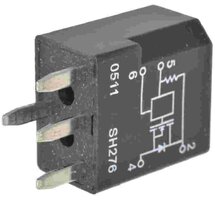I'm playing with my multimeter in the rear fuse box. I determined the reason I had no voltage to the turn signal was because I needed to actually use the switch and turn the turn signal on. Once doing that I had voltage on both sides of the top pins with the fuse in the box. However, the voltage rapidly fluctuates with very high and low readings. If I compare this to the radio for example, I have a steady voltage reading on each top fuse pin. I have the correct amount of voltage going into the fuse block and fuses that hold steady so far show expected voltage. I'm not sure what it means when the voltage is jumping all over the place and I've confirmed it's not my multimeter or my leads or my connection point for ground.
I have watched videos supplied on this site and I have not seen this specific scenario addressed. It's typically voltage on one half of the fuse and none on the other, low voltage or no voltage at all. Feel free to send me a link I may have overlooked.
What would cause voltage to be jumping all over the place?
I have watched videos supplied on this site and I have not seen this specific scenario addressed. It's typically voltage on one half of the fuse and none on the other, low voltage or no voltage at all. Feel free to send me a link I may have overlooked.
What would cause voltage to be jumping all over the place?




